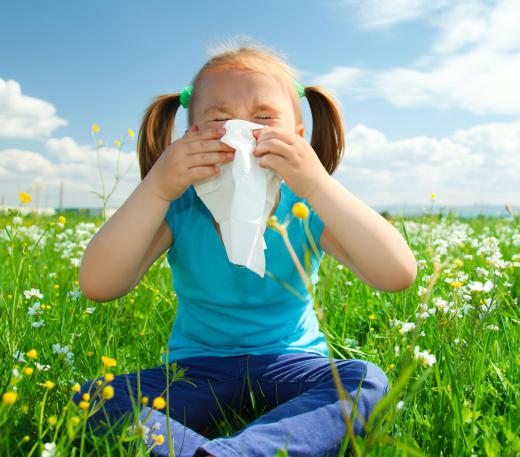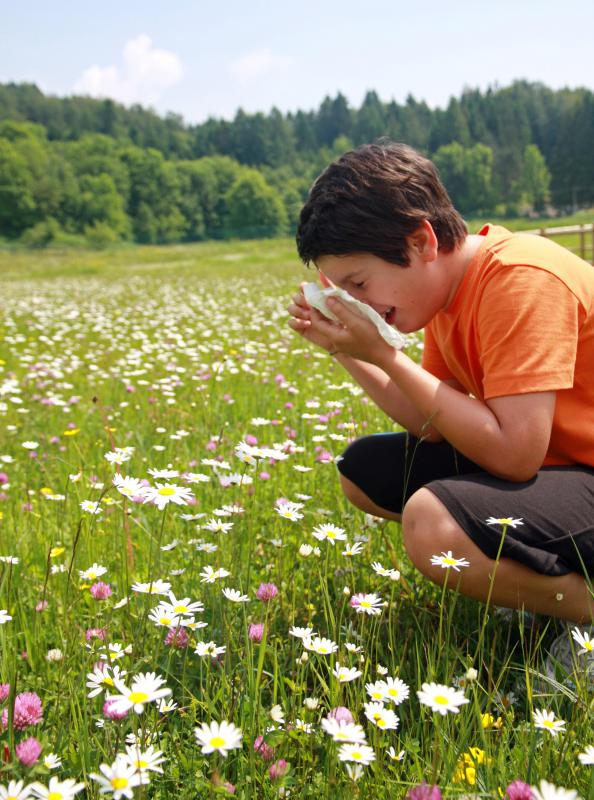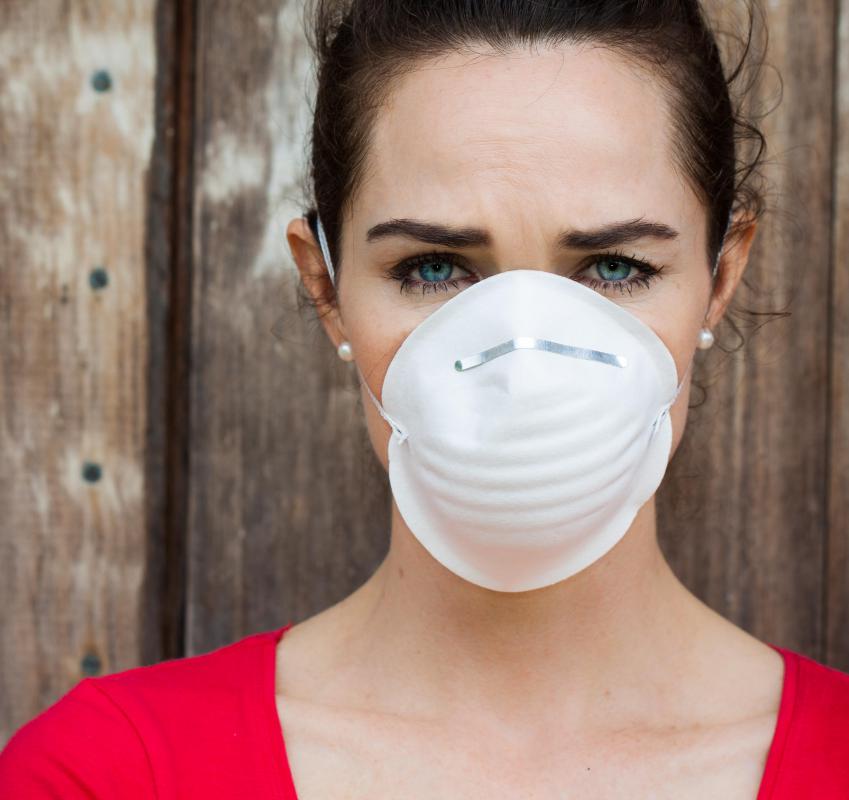At AllThingsNature, we're committed to delivering accurate, trustworthy information. Our expert-authored content is rigorously fact-checked and sourced from credible authorities. Discover how we uphold the highest standards in providing you with reliable knowledge.
What is Pollen Count?
The pollen count is a number that indicates the amount of airborne allergens that are present per cubic meter of air. These numbers are compiled by volunteers at institutions such as universities, medical centers, research facilities, and clinics, and have been an important part of the weather forecast since the beginning of the 20th century. The higher the pollen count, the more severely allergy sufferers will feel their symptoms.
Volunteer agencies collect samples of the air on clear, sticky surfaces. The sample is viewed under a microscope, and each grain of pollen is counted and identified. The pollen count includes all the possible allergens in the air during the past 24 to 72 hours. Based on these numbers, projections are made as to how much pollen will be in the air for anywhere up to the next four days.

Pollen counts are given on a scale of zero to 12. Pollen are microscopic molecules that are light and dry; easily carried by the wind, a single type of pollen can impact a large area. Typically, pollen counts are given for city-wide or county-wide areas, as the process is a time-consuming one that can involve hours of work.
Air sampling devices are often placed on rooftops or in other open spaces, allowing for a collection sample from a wide area. There are more than 1,200 plants, trees, flowers, and weeds that can potentially cause allergies, and these are all measured in the pollen count. The pollen in the air is dependent on the season, although related plants can cause similar reactions in sensitive people. While exact pollen counts vary from year to year, those who follow them will learn when to expect a spike in the pollens that impact their health the most.

Pollen counts are never exact, and numbers taken in the same city can be quite different. Weather conditions can have a drastic impact on numbers, as one sample collected after a rainstorm will have a considerably lower pollen count than one taken in the same city before the rain. The location of the air samplers can also result in different readings, especially if one is located in the middle of a developed area and the other is on the outskirts of town, near a park, or in close proximity to more vegetation.
Frequently Asked Questions
What exactly is a pollen count?

A pollen count is a measurement of the number of pollen grains in a specific volume of air, usually measured over a 24-hour period. It's typically reported as grains per cubic meter and helps individuals with allergies understand their potential exposure to allergens on any given day.
How is the pollen count determined?
Pollen counts are determined using specialized devices like volumetric air samplers, which collect pollen from the air. These samples are then analyzed under a microscope by experts who identify and count the pollen grains, providing an accurate representation of the airborne allergens present in the environment.
Why does pollen count vary throughout the year?

Pollen count varies due to seasonal changes in plant life cycles. Different plants release pollen at different times of the year, leading to higher counts typically in spring and fall. Weather conditions also affect pollen dispersal and concentration, with warm, windy days often leading to higher counts than cold, wet days.
Who should pay attention to the pollen count?

Individuals with allergies, asthma, or other respiratory conditions should monitor pollen counts regularly. High pollen counts can trigger symptoms such as sneezing, watery eyes, and difficulty breathing. Being aware of the pollen count can help these individuals take preventative measures to manage their symptoms.
How can I protect myself during high pollen count days?

On days with high pollen counts, it's advisable to stay indoors with windows closed, use air purifiers, and avoid outdoor activities, especially in the morning when pollen levels are typically highest. Showering after being outside can also help remove pollen from skin and hair, reducing allergy symptoms.
Can pollen counts predict future allergy seasons?
While pollen counts provide a snapshot of current conditions, they can't precisely predict future allergy seasons. However, trends in pollen counts over time can indicate whether certain allergens are becoming more prevalent, potentially signaling more challenging seasons for allergy sufferers in the future.
AS FEATURED ON:
AS FEATURED ON:
















Discuss this Article
Post your comments